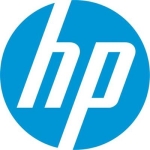What is our primary use case?
We are using Microsoft Defender for Endpoint with advanced threat production. Microsoft's enterprise mobility and security suite fulfills a large number of security strategy requirements for our organization. We are going to use this solution for identity production and for endpoint security.
It's a hybrid setup. The advanced threat protection only comes from the cloud intelligence engine. That's something of a new experience for us, but the rest of the components will be on-prem. We are using Microsoft's cloud.
The whole suite of security enhancement doesn't just include Microsoft Defender. It also covers many of the features that come with the Windows Enterprise version. With this option, we are actually upgrading to the Enterprise version as well and unlocking those security features which are not available in Windows Professional. Microsoft Defender is a whole suite, which is simply not comparable with a usual anti-virus, anti-malware product.
What needs improvement?
In terms of the architecture of the management infrastructure, we found that other technologies are more simple. Microsoft Defender could be simpler too. Plus, Microsoft's philosophy is that they leverage the technology they have already built in Windows or any other services within Windows. So, it is good from that standpoint, but it also becomes a bit cumbersome when it comes to the dependency. Having dependency on many things can be a weakness sometimes because you add up more points of failure to the services. Whereas the other vendors are doing the limited thing, and that's why they're not comparable in prices, but their solutions basically aren't dependent on Microsoft's other services or anything else. They're more dependent on their agent. With Microsoft, it is not just the agent. It is the operating systems that aren't working well. The technology won't give you the desired output.
So, that's something that Microsoft may need to improve: making services more independent wherever possible. That's something of their philosophy. When they build something on their OS layer, they add on technologies, and then there's something for the ISV. That's their strategy, but we keep arguing with them that they have to compare the dependence as other vendors are doing.
From the Microsoft end, the design working depends on the health of other services and other components of the operating system. Whereas if you compare it with the Symantec technology, just the agent health has to be there. That's the case with McAfee as well. They build up their products on developed agents only.
For how long have I used the solution?
We did the POC around 18 months ago, and then we consolidated our findings. As per the organization procedure, we proposed to the committee and then got the recommendation to move on with the pilot and decide the future roadmap.
Microsoft Defender is just one part of the advanced risk protection and advanced malware protection functionality that comes with the Microsoft product. It came with a lot of security, advisories, reviews, and consultancy during the last couple of years. There was a stack of 15-20 requirements that we had to fulfill, like mobile device management and identity protection. We found that Windows Defender meets most of our requirements.
How are customer service and support?
We have had good experience with tech support so far.
We have a direct support agreement with Microsoft. One of the major reasons for moving from the current endpoint security is the support. The quality is not up to the mark. That's something incomparable with the kind of support Microsoft provides.
I would give Microsoft's support a 5 out of 5.
Which solution did I use previously and why did I switch?
In terms of the technical aspect, I'm the lead of the area, which actually takes care of endpoint management, and we have been using Symantec products for that purpose. We have evaluated Microsoft Defender and Microsoft security products, and we are going to switch over to that product. We found that because the endpoint devices are based on Microsoft Windows devices and Windows Defender is integrated with the foundation and the core layer, it makes it more integrated and more agile in terms of responding to any security threats or changes or development, whereas compared to the other vendors who develop anything on top of that platform, they're always lagging behind.
Symantec support is very pathetic. They are very methodical. They're very slow. We seldom find them providing solutions to any incident or issue in a reasonable time. It can take from days to weeks. In the case of Microsoft, their resolution time is reasonably faster than Symantec. Even in the case of VMware and Redhead, Microsoft stands on top of all those vendors.
How was the initial setup?
I wouldn't say the setup is easier than other solutions but it's not bad. It's almost equivalent to what we have been using currently, but the strength comes in what it does and how it secures that part. The setup is similar to the other competitors. For Symantec, we use their endpoint manager deployment and then a deployment across the sites and branches.
What about the implementation team?
We are doing deployment with Microsoft's tech support. But for the implementations and rollout of technologies, we have seldom used Microsoft. We have our own technical team who are trained and who keep on updating on their skills, and we continue to inject new resources to the team as well. When a new technology comes in, then we do a combo, whereby the in-house team actually learns with the local authorized partner.
What's my experience with pricing, setup cost, and licensing?
Microsoft Defender is not comparable to a single endpoint security product, like Trend Micro, Symantec, or McAfee. Because of that, the price is higher than others because it is doing more than what the others are doing.
What other advice do I have?
I would rate this solution 7 out of 10.
Which deployment model are you using for this solution?
Hybrid Cloud
If public cloud, private cloud, or hybrid cloud, which cloud provider do you use?
Microsoft Azure
Disclosure: My company does not have a business relationship with this vendor other than being a customer.














